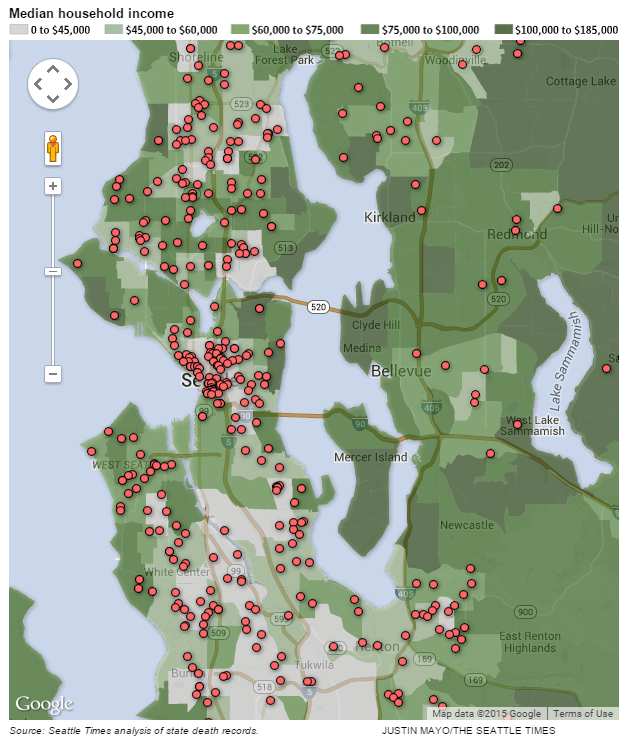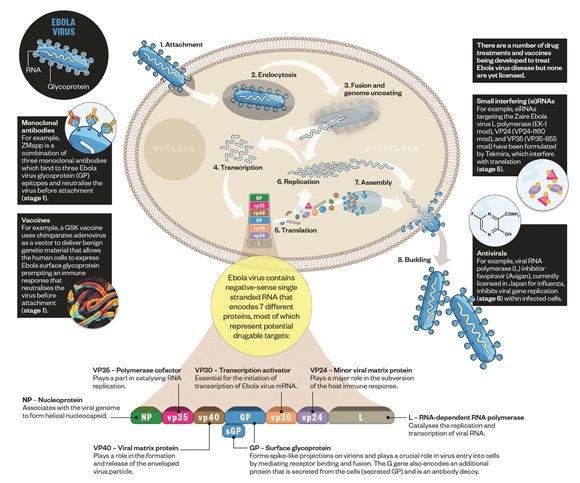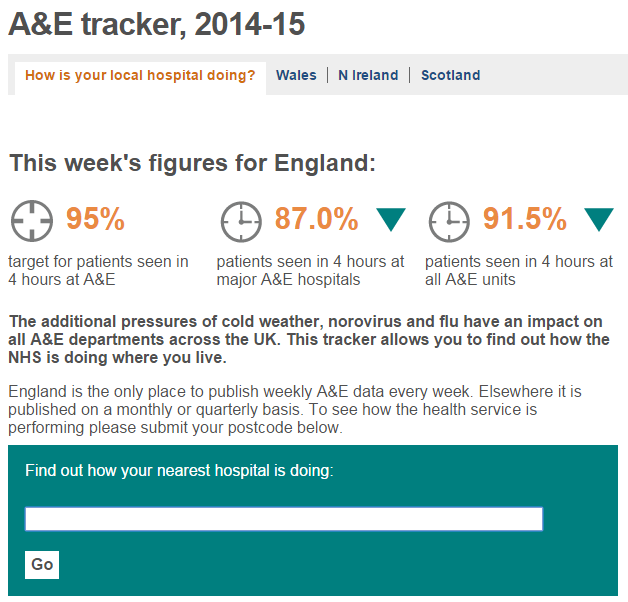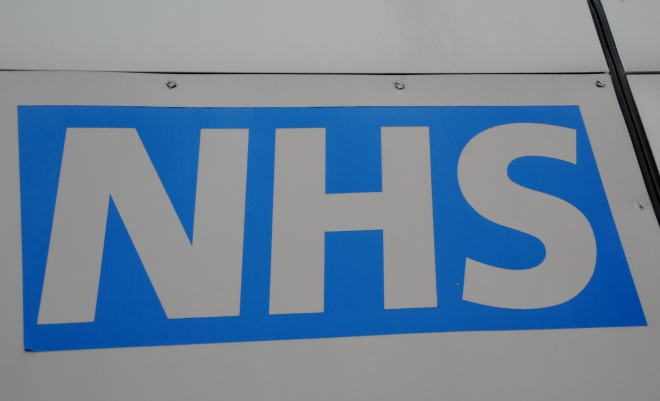 There were 3,324 malnourished inpatients in NHS hospitals managed by 46 foundation trusts in 2014. Figures have been increasing due to the increase of inpatients since 2011, and more than 40% of malnourished inpatients were in Gateshead NHS foundation trust. Figures were obtained by FOI requests from 46 trusts in England.
There were 3,324 malnourished inpatients in NHS hospitals managed by 46 foundation trusts in 2014. Figures have been increasing due to the increase of inpatients since 2011, and more than 40% of malnourished inpatients were in Gateshead NHS foundation trust. Figures were obtained by FOI requests from 46 trusts in England.
In 2013, the average percentage of malnourished inpatients in 46 trusts was below 0.1%, and it had slightly increased from 2011. The proportion of malnutrition inpatients was lower than 1% in 43 trusts in 2013, but have increased in 25 trusts in comparison with the previous year.
Total number of 46 NHS foundation trusts
| Year | Average percentage of malnourished inpatients | Total number of malnourished inpatients | Total number of inpatients |
| 2011 | 0.07 | 2,627 | 3,554,409 |
| 2012 | 0.08 | 2,813 | 3,612,338 |
| 2013 | 0.08 | 3,102 | 3,710,775 |
| 2014 | – | 3,324 | – |
In three trusts, the percentage of malnourished inpatients was over 2% in 2013, and highest in Gateshead Health NHS foundation trust at 2.19%.
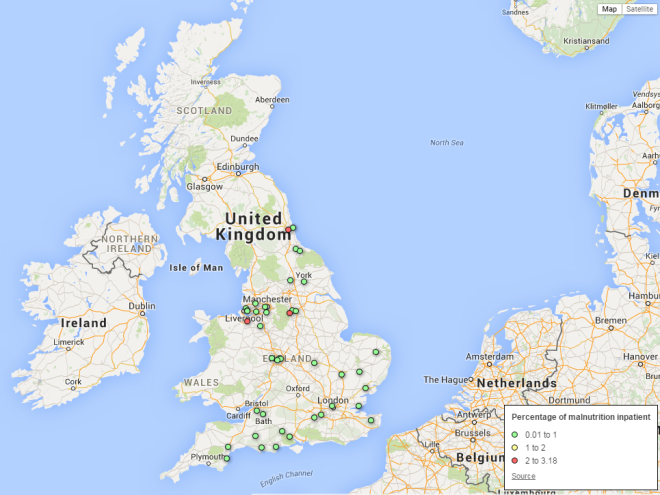
Trusts with the highest percentage o malnourished patients in 2013
| NHS foundation trust | Percentage of malnourished inpatients | Number of malnourished inpatients | Number of inpatients |
| Gateshead Health NHS Foundation Trust | 2.18 | 1,310 | 59,970 |
| Cheshire and Wirral Partnership NHS Foundation Trust | 2.15 | 55 | 2,559 |
| Sheffield Health & Social Care NHS Foundation Trust | 2.01 | 20 | 993 |
| Yeovil District Hospital NHS Foundation Trust | 0.42 | 169 | 40,265 |
| Salford Royal NHS Foundation Trust | 0.18 | 147 | 80,856 |
an aging POPULATION AND MENTAL PROBLEMs POSSIBLY AFFECT THE NUMBER OF MALNourished INPATIENTS
Are there any particular reasons why trusts have many malnourished inpatients? Kerri James, communications officer of QE Gateshead said;
“At the Queen Elizabeth Hospital we have two older person’s mental health inpatient wards and also two general older persons ward. Malnutrition is something that generally occurs in an older population, and as a lot of our inpatients fall into this category. It’s natural that would be reflected in a higher number”.
“Many patients come into hospital already malnourished which would need to be taken into account for these figures”.
“People with mental health problems are often at higher risk of malnutrition as they are unable to care for themselves properly at home, so are malnourished when they come to us, we have two older person’s mental health inpatient wards”.
BAPEN (British Association for Parenteral and Enteral Nutrition), released a result of a nutrition screening survey in the UK in 2014. According to the report, the prevalence of malnutrition becomes more likely in elderly people.
In Gateshead, the food budget has been increasing since 2012, and inpatients are served a meal three times daily (breakfast, lunch and tea) plus snacks for the last five years.
| Year | Percentage of malnourished inpatients | Number of malnourished inpatients | Number of inpatients | Annual budget for foods for inpatients(£) |
| 2010 | 2.04 | 970 | 47,596 | – |
| 2011 | 1.85 | 1,071 | 57,903 | 647,506 |
| 2012 | 1.80 | 1,033 | 57,462 | 598,155 |
| 2013 | 2.18 | 1,310 | 59,970 | 758,188 |
| 2014 | – | 1,362 | – | 767,868 |
Also, Jane Harris, communications manager of Sheffield Health & Social Care NHS Foundation Trust, explains their situation;
“We are a mental health and social care Trust. Therefore, the patients admitted into our hospitals and in-patient services are people who are experiencing a significant deterioration in their mental health and well-being or who have been diagnosed with dementia or who have a learning disability”.
“The nature of their illnesses or diagnosis may mean that they have not been regularly eating and/or drinking prior to admission”.
Food education is more important to improve the nutritional health of inpatients
According to the UK government, the average food cost per inpatient per day was £10.48 in 2013, this had increased by £0.61 from the previous year. However, the average percentage of malnourished inpatients had not decreased.
Nigel Penny, Senior Lecturer in Applied Nutrition and Physiology at Birmingham City University, said that food costs do not necessarily influence the number of malnourished inpatients.
“The catering provisions used to be outsourced. The reason of malnutrition of inpatients is more about education about what is a balanced and healthy meal”.
“Nutrition specialists should be involved with choosing the right foods for each inpatient. In the long term, choosing the right foods can prevent illnesses and reduce the costs of the NHS”.
Foundation trusts in the UK have financial problems. 77 NHS foundation trusts of 152 in England are in deficit, and the overall net deficit was £349 million in 2014, the latest statistics of the UK government have shown.
In 2013, the surplus was £126 million, and the financial situation is rapidly declining from the previous year.
how to manage the nutritious conditions of inpatients properly?
In this situation, the Queen Elizabeth Hospital focuses on care for the elderly by using a picture menu. James said;
“We have lots of initiatives such as easy to use crockery and drinks containers, and also patients who need extra help at mealtimes and with drinking are giving red crockery so that anyone involved in their care knows”.
“Our catering department has also a created a picture menu to aid with keeping people well fed, as research found people, particularly with mental health problems like dementia, responded much better to a pictorial menu”.
Harris also explained the efforts by Sheffield Health & Social Care NHS Foundation Trust;
“We have introduced an electronic based version of the malnutrition universal screening tool (MUST) and associated training is in place across most of the in-patient areas and we have reviewed our weight management care pathway during the past year”.
“We have improved the quality of diet available and the experience of dining within residential services. Advice on diet is being made readily available including improved methods for measuring and recording hydration of vulnerable individuals”.
